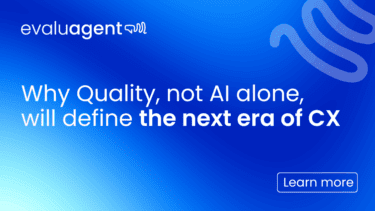Care Quality Commission (CQC) was established in 2009 to regulate and inspect care homes, hospitals, doctors & dentists, social care providers and mental health services etc. They’re the independent regulator of all health and adult social care in England, making sure these services provide people with safe, effective, compassionate, high-quality care.
Given the industry they’re in, quality and standard of service is a high priority. They definitely practice what they preach.
Prepared for lockdown and remote working.
CQC are currently operating 100% remotely with 320 National Customer Service Centre colleagues manning existing communication channels with customers, from their own homes. This is in addition to the 3200 employees also working remotely in other areas of the business.
This isn’t the first time CQC have needed to create a remote working option. Those based in the UK and especially those in the North East, should remember the snow storm brought over in 2018, known locally as ‘Snowmageddon’. This weather was the Beast from the East according to the media and resulted in thousands of workers being stuck at home across the country with very little warning. CQC pulled through that event with a much stronger view of home working options for the full team. They took lessons learned from the way the event was handled pre, during and post the weather, giving their business continuity plans a big advantage over other businesses.
Prepare. But fail fast.
“There needs to be good flexibility and great teamwork for remote working to be successful. Set realistic targets and an approach to moving forward that is simple and straightforward. Test, test, test. Use lessons learned to give you a head start. Its ok to fail, but fail fast and move to option B, C or D.” Max Turner – Telephony Planning Manager.
The leadership team at CQC were quick to react to the news coming in from other countries beginning to suffer with COVID-19 issues. They began testing remote working before it was a necessity. This meant they could test processes, equipment, infrastructure and management plans, before moving all teams to remote working. A Contingency Team was created to deal with support needs and Technical teams were set to work to make plans reality. Starting small, a few teams at a time, they then upped the numbers. Once essential equipment requirements were met, the team went back to those agents with more individual requirements and worked on a one on one basis to ensure each worker had their own needs met where possible. Within 1 week they had the ability to be 100% remote. The only delay was waiting for hardware.
Create a place to be engaging.
One thing CQC were quick to implement was a structure for communications. Creating spaces for water-cooler chats, as well as more formal areas an agent can go straight to for support. There’s a need for honest and open chats. Managers also need to be mindful of their own team welfare as much as their customers. There’s an obvious drive to communicate through voice / video calls, emails, and online forums. This makes sure that messages from higher up are reaching everyone and are being repeated by your Ops and Team Managers.
“There needs to be a balance of business vs individual needs in times like these. We encouraged team leaders to regularly speak to their team and make a space that’s safe with open two-way communication between manager and agent.” Harriet Saunders – Operations Manager, Contact Knowledge Team.
Business as usual – where possible.
“Show understanding and flexibility when it comes to setting your agents up for remote working. Be open minded to what agents and team leaders can deliver. Make sure your team see care and compassion from you, as this will ripple through the teams.” Christine Teasdale – Customer Engagement and Improvement Lead
It’s important to show understanding that everyone is going through new experiences at the moment, but the business is still operational, customers are still making contact and work must go on. Trying to keep a sense of normality is really important, and CQC have continued this by maintaining 1:1 conversations with teams. Having regular feedback sessions and check in’s with agents is especially important when working remotely. Even more so when the quality of interactions with customers is so vital.
Having the EvaluAgent tool has been invaluable for CQC to keep everyone sighted on any emerging themes and trends. It also allows them to provide responsive timely coaching and training to contact centre colleagues.
“Colleagues enjoy the timely feedback and we all love not having to use spreadsheets to track quality results any longer! The Evaluagent Quality tool has been a blessing from its introduction months ago and never more so than with us all unexpectedly relocating to working at home.” Christine Teasdale.
Top tips for supporting agents with remote working.
Richard Lancaster, Head of CQC National Customer Service Centre Contact Teams, shared his advice for adopting various team engagement elements to aid remote working.
There are 5 key elements you need to consider to make it work.
- – Communication
- – Compassion
- – Conduct
- – Contingency
- – Honest
Communication
You have to be clear to everyone within the team not just your direct reports. Don’t present them with ‘management speak’ style communication. Be open and honest, and talk to them in language that everyone can understand. Keep communications as short and punchy as possible and try and give the facts that most matter to them.
Compassion
If you’re temporarily moving to a remote working arrangement or indeed if this is a permanent change, put yourself in your teams shoes. Understand what it means for your Ops Managers, Team Managers, Team Advisors, all roles. And remember that everyone is different. Some will enjoy the home working experience, others will struggle. Keep the channels of communication open at all times. Hold daily welfare calls with your team or a 1:1 welfare discussion with team members when either you or they feel there is a need.
Conduct
Make your expectations clear from the outset. You’ll have to make allowances for individuals working from home, particularly if this is part of a contingency process. Productivity may dip, wrap times may increase but you will need to monitor that individuals don’t let standards slip. Ensure your Team / Ops Managers work closely with your Real Time Planning Team to review performance at all levels and start any conversations early with supportive measures put into place. We’re finding so far that, by clearly communicating and showing compassion for the situation, individuals are, on the whole, performing well.
Contingency
Always have a plan B,C and maybe even D. Don’t be afraid to make quick and decisive decisions when you feel things aren’t working. That gut feeling is probably correct and it’s better to fail fast and put in alternative plans early than waiting too long by which time it could be too late.
Honesty
As a leader your team want to hear honesty, they aren’t looking for perfection, particularly when you find yourselves in a new situation. By being honest and bringing everyone with you on what can be an experimental journey, you will hopefully have their full support. It’s ok if things go wrong as long as you are proactive and put them right.
We shall meet again
We’re hoping to visit CQC again as the remote working scenario continues to see how they’re evolving processes and best practises to suit the changing environment we find ourselves in. They’ve shown a fantastic effort in embracing team engagement and putting their agents needs at the forefront of plans, meaning they can get to provided exceptional customer service as soon as possible. Great work!
Find out how EvaluAgent are supporting remote workers with unique team engagement features.




